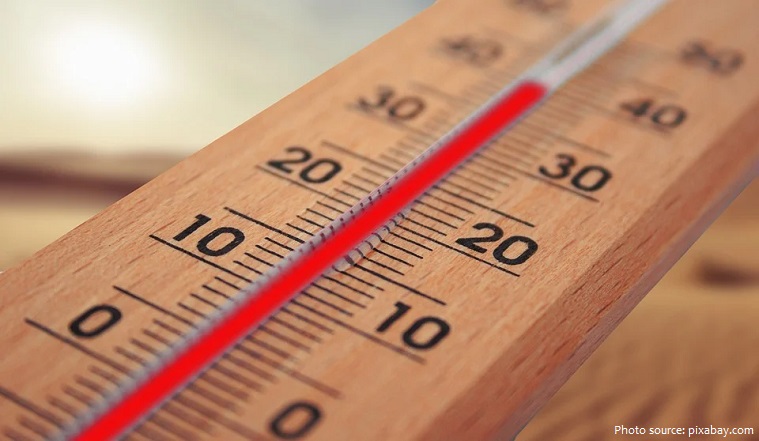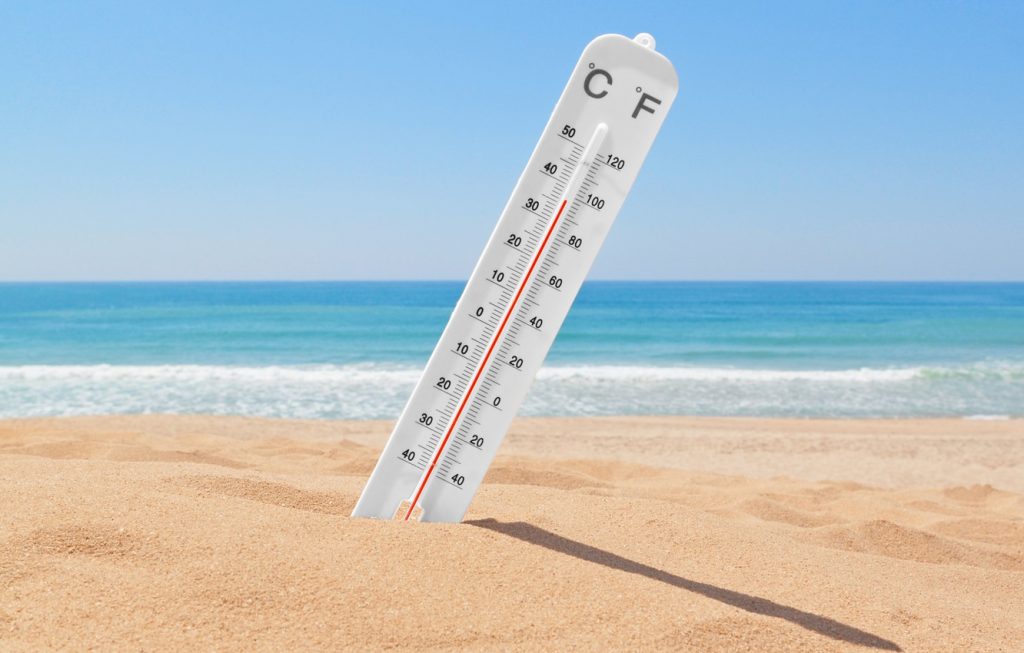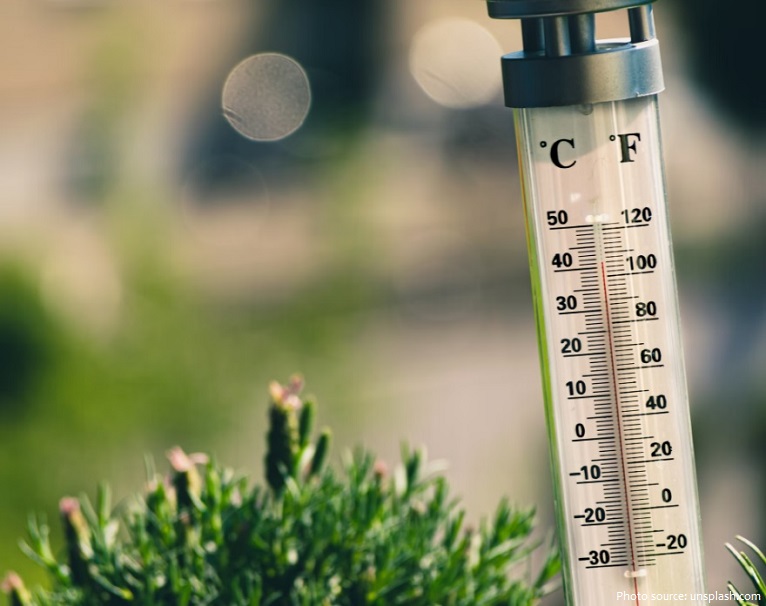
A thermometer is a device used for measuring temperature.
It can measure the temperature of a solid such as food, a liquid such as water, or a gas such as air. The three most common units of measurement for temperature are Celsius, Fahrenheit, and kelvin.
The word “thermometer” is derived from two smaller word fragments: thermo from the Greek for heat and meter from Greek, meaning to measure.
Thermometers measure temperature by using materials that change in some way when they are heated or cooled. In a mercury or alcohol thermometer, the liquid expands as it is heated and contracts when it is cooled, so the length of the liquid column is longer or shorter depending on the temperature. Modern thermometers are calibrated in standard temperature units such as Fahrenheit (used in the United States) or Celsius (used in Canada), or Kelvin (used mostly by scientists).

Various authors have credited the invention of the thermometer to Hero of Alexandria. The thermometer was not a single invention, however, but a development. Hero of Alexandria (10–70 AD) knew of the principle that certain substances, notably air, expand and contract and described a demonstration in which a closed tube partially filled with air had its end in a container of water. The expansion and contraction of the air caused the position of the water/air interface to move along the tube.
In 1593, Galileo Galilei invented a rudimentary water thermoscope, which for the first time allowed temperature variations to be measured. Today, Galileo’s invention is called the Galileo Thermometer, even though by definition it was really a thermoscope. It was a container filled with bulbs of varying mass, each with a temperature marking. The buoyancy of water changes with temperature. Some of the bulbs sink while others float, and the lowest bulb indicated what temperature it was.

In 1612, the Italian inventor Santorio Santorio became the first inventor to put a numerical scale on his thermoscope. It was perhaps the first crude clinical thermometer, as it was designed to be placed in a patient’s mouth for temperature taking.
Neither Galileo’s nor Santorio’s instruments were very accurate.
The first doctors to routinely take the temperature of their patients were Hermann Boerhaave (1668–1738) – Gerard L.B. Van Swieten (1700–1772), founder of the Viennese School of Medicine and Anton De Haen (1704–1776). These doctors found temperature correlated to the progress of an illness. However, few of their contemporaries agreed, and the thermometer was not widely used.

By the early 18th century as many as 35 different temperature scales had been devised. The German physicist Daniel Gabriel Fahrenheit in 1700–30 produced accurate mercury thermometers calibrated to a standard scale that ranged from 32°, the melting point of ice, to 96° for body temperature. The unit of temperature (degree) on the Fahrenheit temperature scale is 1/180 of the difference between the boiling (212°) and freezing points of water.
In 1866, Sir Thomas Clifford Allbutt invented a clinical thermometer that produced a body temperature reading in five minutes as opposed to twenty.
Any substance that somehow changes with alterations in its temperature can be used as the basic component in a thermometer. Gas thermometers work best at very low temperatures. Liquid thermometers were once the most common type in use.

In the early 21st century, mercury thermometers were supplanted by electronic digital thermometers, which were more accurate and did not contain toxic mercury. Digital thermometers use a thermistor, a resistor with a resistance that varies with temperature.
Other thermometers operate by sensing sound waves or magnetic conditions associated with temperature changes. Magnetic thermometers increase in efficiency as temperature decreases, which makes them extremely useful in measuring very low temperatures with precision.
Located outside of Las Vegas, the world’s largest thermometer measures 134 feet high and commemorates the highest temperature ever recorded in North America: 134 degrees Fahrenheit. This temperature was measured in nearby Death Valley in 1934.

On 9 August 2007, researchers from McMaster University in Hamilton, Canada, published a paper that demonstrated the world’s smallest thermometer. Made from Green Fluorescent Protein, the substance that allows jellyfish to glow, the protein emitted “flashes” of light in direct relationship to its temperature. The flashing of the protein happens very quickly and is caused by light being absorbed and emitted by the protein molecules. Theprotein itself is only around ~42 Å long and ~24 Å in diameter, and comprises 238 amino acids in a cylindrical arrangement. Applications in micro-surgical monitoring and non-invasive sensors for health monitoring are an obvious offshoot of this incredible technology.
Richard T Porter (USA) has a collection of 4,580 thermometers that he has amassed since 1978, all are housed in the Porter Thermometer Museum, Onset, Massachusetts, USA.
